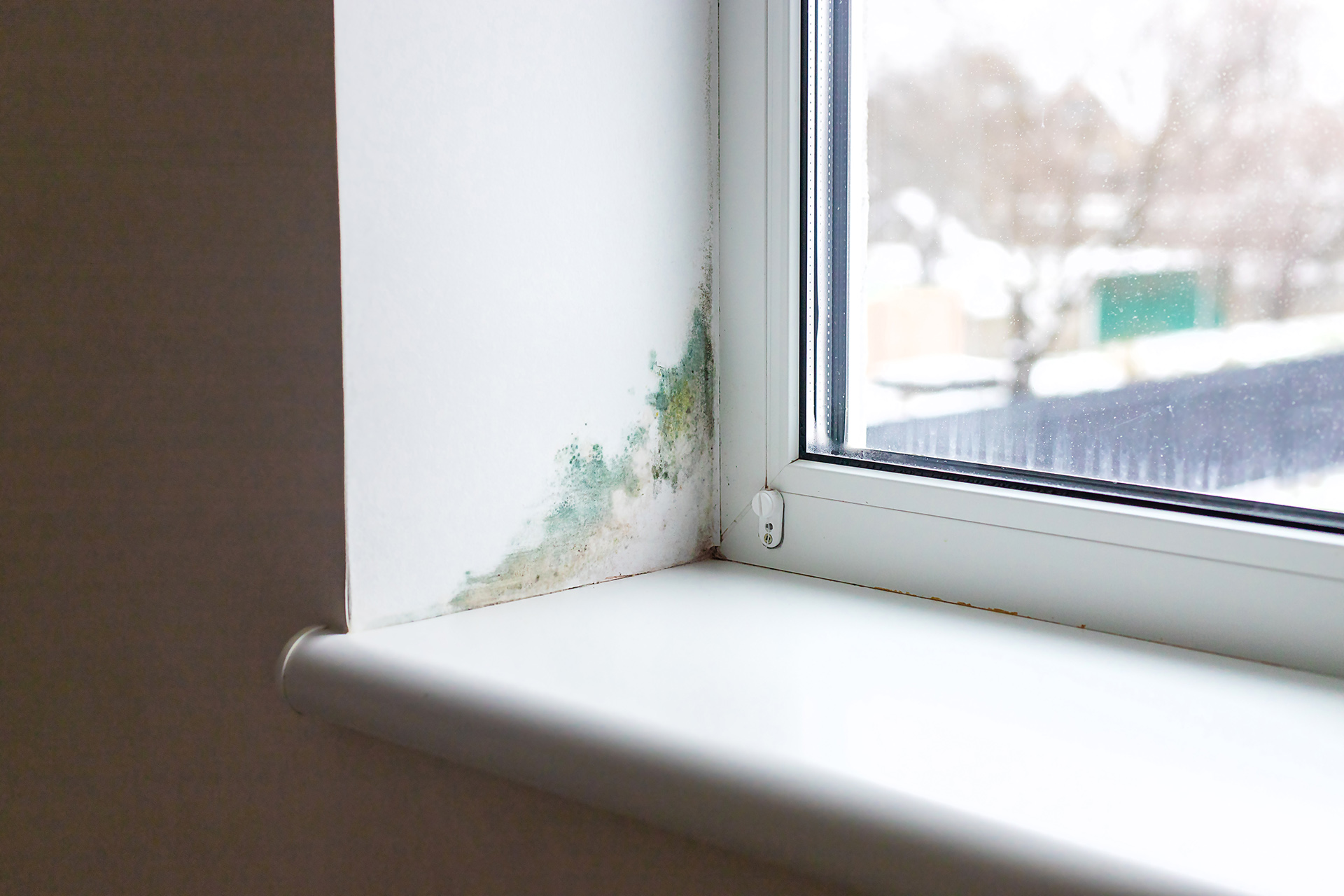How to Choose the Right Survey for Your Property:
A Simple Guide
Buying a home is exciting—whether it’s your first property or you’re making your next big move. But along with that excitement often comes a few big decisions that can feel a little overwhelming. One of the most important choices you’ll need to make is deciding which property survey to get. With terms like “Building Survey,” “Homebuyer Report,” and “Home Condition Report” flying around, it can be tricky to know where to start.
At INHOUSE, we understand that this can feel a bit confusing, so we’re here to simplify things. In this guide, we’ll walk you through everything you need to know to choose the right survey for your property, ensuring you feel confident, informed, and ready to make your purchase without any hidden surprises.
THE DIFFERENT TYPES OF SURVEYS WE OFFER
Different homes require different levels of inspection. Depending on the age, condition, and type of property you’re buying, you may need a specific type of survey. Here’s a breakdown of the main surveys we offer at INHOUSE:
1. BUILDING SURVEY (Level 3)
Formerly known as a Structural Survey, this is the most comprehensive survey available. A Building Survey is perfect for older homes, properties that have undergone significant changes, or homes that you plan to renovate. It provides a detailed report on the structure and condition of the property, identifying both major and minor defects. This survey is ideal if you’re purchasing a home with an unusual construction type or where extensive work is required.
2. HOMEBUYER REPORT (Level 2)
This is the most popular survey for homes in reasonable condition. It gives you more detail than a basic report and includes an inspection of the visible areas of the property. We offer the Homebuyer Report with or without a valuation, depending on whether you want an assessment of the property’s market value alongside the condition report. This survey highlights any defects or potential issues that could affect the property’s value, such as damp, subsidence, or structural concerns.
3. HOME CONDITION REPORT (Level1)
A Home Condition Report is ideal for newer properties or homes in good overall condition. It provides a snapshot of the property’s state, identifying any urgent issues without going into too much detail. This is a good option if you’re buying a fairly modern property and want to confirm that everything is in good working order.
WHY DO YOU NEED A SURVEY IN THE FIRST PLACE?
Before we dive into the different types of surveys, let’s take a quick look at why getting a survey is so important. A residential survey is a professional inspection of your potential home that checks for any underlying problems or potential issues. It’s a way of ensuring you’re fully aware of what you’re buying, from the roof to the foundations.
Without a survey, you could end up facing unexpected repairs or major structural issues after moving in—potentially costing you thousands of pounds. A survey helps you:
– Identify any hidden issues with the property before you buy.
– Negotiate a better price or request repairs based on the findings.
– Avoid costly surprises by planning for future repairs or maintenance.
Now, let’s break down the different types of surveys and help you decide which one is right for you.


Laura Charlesworth is our approachable and highly experienced Senior Building Surveyor at INform Surveying Limited. With a passion for helping homebuyers and property owners make informed decisions, Laura combines technical expertise with a down-to-earth approach to ensure you feel supported every step of the way.
Whether you’re purchasing your first home, managing a large renovation, or need guidance on complex property issues, Laura is here to provide clear, actionable advice tailored to your needs.
Got a question or ready to book your survey?
Laura is just a call or message away—always happy to help you move forward with confidence.
01 BUILDING SURVEY (Level 3)
Ideal for Older or Unique Properties
A Building Survey is the most detailed and comprehensive type of inspection available. It’s perfect for older properties, homes with unique features, or houses that have undergone significant changes or extensions.
What’s Included?
- A thorough inspection of the entire property, including the structure, roof, walls, floors, and any hidden areas.
- A detailed report that covers both major and minor defects, from cracked walls to issues with damp or subsidence.
- Expert advice on repairs, potential future problems, and maintenance.
Best For:
- Older properties (especially if they were built before 1900).
- Properties that have been extensively altered or extended.
- Homes in need of renovation or where you’re planning to make structural changes.
Why Choose a Building Survey?
A Building Survey gives you the most in-depth understanding of your property. It’s particularly useful if you’re buying an older home with the potential for structural issues, or if you’re looking to make significant changes. With this survey, you’ll have a clear picture of what to expect, allowing you to budget for any repairs or negotiate a better deal with the seller.
Case Study:
A Building Survey Uncovers Hidden Damp in a Period Home
We recently helped Chris and Emma, who were in love with a charming Victorian terrace. They knew the home was old but didn’t expect any major issues, as it had been recently renovated. However, based on our advice, they opted for a Building Survey, which uncovered serious damp problems that had been hidden behind fresh paint. The survey allowed them to renegotiate the price and ensure the repairs were taken care of before completing the purchase.
For Chris and Emma, skipping the survey could have resulted in repair bills exceeding £10,000—but thanks to the Building Survey, they entered their new home with con

02 HOMEBUYER REPORT (Level 2)
Best for Modern or Standard Properties
The Homebuyer Report is our most popular survey, perfect for properties that are in reasonably good condition and don’t have any obvious issues. It’s more detailed than a basic inspection and provides a clear understanding of any potential problems that could affect the property’s value.
What’s Included?
- A detailed inspection of the visible parts of the property, from the roof to the floors.
- Information on any defects or issues that could affect the property, such as damp, subsidence, or roofing problems.
- The option to include a valuation, so you know how much the property is really worth.
Best For:
- Properties built in the last 50 years.
- Homes that appear to be in good condition with no major visible issues.
- Buyers who want peace of mind without needing an in-depth structural survey.
Why Choose a Homebuyer Report?
This survey is a great middle-ground for homes that are in good overall condition but might have a few hidden issues. It’s designed to flag up anything that could affect the property’s value or lead to future problems, without going into as much detail as a Building Survey. It’s also ideal for newer homes where you don’t expect major structural concerns.
Case Study: HOMEBUYER REPORTd
AVOIDING A DAMP PROBLEM IN A NEWLY RENOVATED HOME
Jess and David were first-time buyers, purchasing a 10-year-old semi-detached house. The property seemed in great condition, but they wisely opted for a Homebuyer Report, just to be sure. During the inspection, we found a significant damp issue in the kitchen, caused by poor ventilation and condensation. Thanks to the report, they were able to negotiate with the seller, who agreed to cover the cost of repairs before the sale went through.
Had they skipped the survey, Jess and David could have faced repair bills running into the thousands, but instead, they avoided a major financial headache.

03 HOME CONDITION REPORT (Level 1)
IDEAL FOR NEWER PROPERTIES
If you’re buying a relatively new home, the Home Condition Report offers a quick, affordable check on the property’s overall condition. While it’s not as detailed as the other surveys, it’s a great option if you’re confident the property is in good shape but want to make sure there are no urgent issues.
What’s Included?
A brief inspection of the visible elements of the property.
A clear and simple report highlighting any urgent defects or issues that need addressing.
Best For:
New-build properties or homes that are less than 10 years old.
Buyers who are confident the property is in good condition but want peace of mind.
Why Choose a Home Condition Report?
This is the ideal option for buyers looking at newer properties or homes that have been well-maintained. It provides a snapshot of the property’s current condition, allowing you to move forward with the purchase confidently, knowing that no major issues have been missed.
Case Study: HOME CONDITION REPORT
A SIMPLE CHECK ON A NEW BUILD SAVES TIME AND MONEY
Tom and Rebecca were buying a brand-new house in a recently completed development. Since the home was newly built, they didn’t expect any issues. However, they still wanted reassurance, so they opted for a Home Condition Report. During the inspection, we spotted several snagging issues, including poorly fitted doors and unfinished tiling in the bathroom. The report allowed Tom and Rebecca to have these defects fixed by the developer before they moved in, saving them time, hassle, and unexpected costs down the line.

EXTRA SERVICES TO CONSIDER
Alongside our main surveys, INHOUSE also offers some additional services that might be worth considering, depending on your property and situation:
- New Home Inspection & Snagging Reports: Perfect for brand-new builds to ensure any issues are addressed before you move in.
- Valuation Reports: These are particularly useful if you’re buying through a Help to Buy scheme or need a valuation for shared equity or matrimonial matters.
- Specific Defect Reports: If you’ve noticed a particular issue, such as cracks in the wall or damp, this report focuses on diagnosing and advising on that specific problem.
- Party Wall Matters: If your property involves shared walls, we can guide you through the legal requirements of the Party Wall etc. Act 1996.
How to Make the Right Choice
When choosing a survey, the key is to consider the age, condition, and type of property you’re buying. Here’s a quick guide:
- If the property is older or has been heavily modified: Choose a Building Survey (Level 3).
- If the property is relatively modern and in good condition: A Homebuyer Report (Level 2) should cover all your needs.
- If the property is a new-build or under 10 years old: A Home Condition Report (Level 1) will give you peace of mind without unnecessary detail.

READY TO MAKE AN INformed DECISION?
Whether you’re buying your first home, upgrading, or downsizing, a residential survey is an essential step in the process. At INHOUSE, we’re committed to making sure you have all the information you need to feel confident in your decision. From detailed Building Surveys to quick, straightforward Home Condition Reports, we’ve got you covered.
Ready to take the next step? Contact LAURA INhouse today for a free consultation or to book your survey. We’ll guide you through the process, so there are no surprises—just peace of mind.

